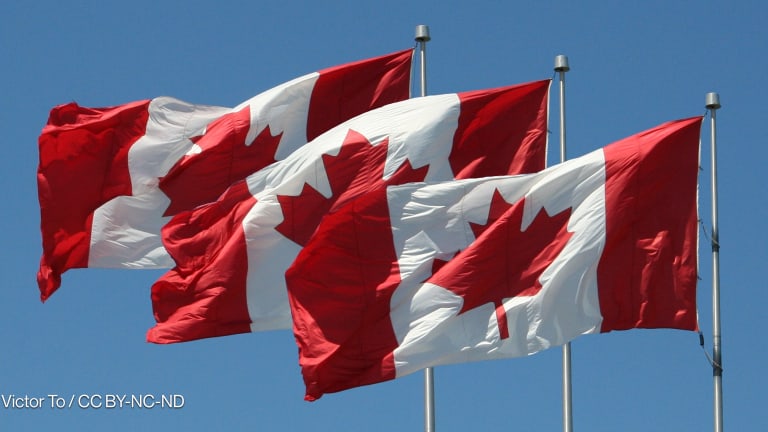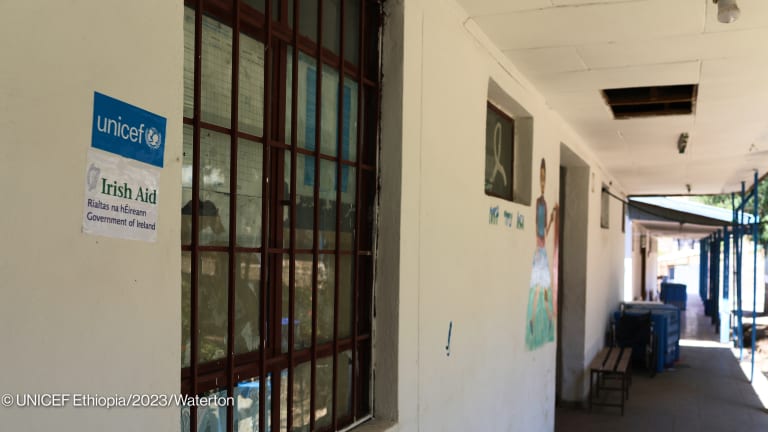Chinese aid: A primer
China committed over $1 trillion for more than 10,800 projects between 2000 and 2017. We looked into the data and other sources to understand how the country's aid works and where it spends its money.
China is among the leading players in global development. In recent years, it has spent very significant sums on projects in countries in the global south, including via the Belt and Road Initiative, or BRI, a transcontinental strategy aiming to improve connectivity and cooperation between Asia, Africa, and Europe. The project is described as a way to connect China more effectively to its trading partners, but it has also served to build Chinese political power. As part of that spending, China has committed significant sums to development issues. But unlike most bilateral donors it has chosen to fund outside the system of official development assistance, or ODA,as recorded by the Organisation for Economic Co-operation and Development, leading to a lack of available resources detailing where exactly it spends its money and how it determines its sectoral and geographic priorities. Partly as a result of this, its activities have been marred by questions and speculations about how it spends its aid. China is believed to spend several billion dollars a year on ODA-like projects, meaning that if it followed the OECD methodology, it might be the world’s sixth-largest donor. According to a paper published in 2022, China, just like many of the Development Assistance Committee, or DAC, member countries, gave more aid to lower-income countries in Africa, although its aid comes with an important consideration — the recipient’s adherence to the “One-China policy,” which includes a refusal to recognize the sovereignty of Taiwan. Meanwhile, different studies provide mixed results when it comes to the effect of Chinese aid on the recipient countries’ economic and social development outcomes. However, China is taking steps to put its aid on a more transparent and conventional footing, publishing clearer strategies and sketching out more clearly the role of its aid agency. How much money does it give? BRI was first proposed by China in 2013. The initiative encompasses a wide range of infrastructure projects — from railways to energy pipelines to the establishment of special economic zones, or selected areas that are intended to create jobs and promote economic growth. As of February 2023, around 147 countries have joined the initiative — accounting for 40% of the world’s gross domestic product. The biggest BRI project to date is the China-Pakistan Economic Corridor, worth $62 billion. China has spent around $1 trillion so far, and it is estimated to spend more out of the $8 trillion total planned investments under BRI. In 2021, AidData published its most recent data on Chinese aid, which included over 13,400 projects funded by more than 300 government agencies and state-owned institutions between 2000 and 2017. Of this, over 10,800 projects secured funding, while the rest were either canceled, suspended, or have not reached the commitment stage. Of the money, China has spent so far $120.1 billion on ODA-like financing. Meanwhile, $814.2 billion is similar to what OECD classifies as other official flows, or OOF. OECD defines OOF as any transactions that do not fall under ODA criteria, including grants for commercial purposes, projects with less than 25% grant element, and activities related to export facilitating. A further $72.1 billion went to other forms of financing that cannot be classified. Almost 60% of the ODA-like spending, worth $70.4 billion, came in the form of loans. Then $30.4 billion as grants, $18.8 billion as debt forgiveness, and the rest in other forms, such as technical assistance and debt rescheduling. There’s no single pattern in China’s aid spending and it has seen ups and downs throughout the time period. Its biggest spending was in 2010, worth $19.6 billion. This puts China next to the U.S., which spent $36.7 billion that year. China’s overall aid in the time period would rank it sixth among DAC donors — after the U.S., Germany, the U.K., France, and Japan. As of 2017 — the most recent data available — China’s ODA spending was around $8.4 billion — again, putting it some way behind the five biggest DAC donors previously mentioned. Among government agencies, around 44.1% of China’s total aid, worth $52.9 billion, came from its Eximbank. MOFCOM ranked next, with $33.7 billion, or 28.1% of the total. Then the China Development Bank, with $9.5 billion, and the Bank of China, with $1.4 billion. A further $18.7 billion came from unspecified agencies. Where is the money going? As stated, China’s total ODA-like spending in 2017 amounted to $8.4 billion. Sub-Saharan Africa received the biggest portion among regions, with $3.2 billion, or 37.8% of the total. South Asia ranked next, with $1.8 billion. Then East Asia and Pacific, $1.7 billion; Europe and Central Asia, with $612.9 million; Middle East and North Africa, with $557.3 million; and Latin America and the Caribbean, with $546.4 million. Among the countries, Pakistan accounted for the biggest share, worth $672.8 million, or 8% of the total. The largest project was for the construction of the new Gwadar International Airport, worth $274.6 million. Sri Lanka ranked next, with $588.1 million; Laos, with $508.9 million; Zambia, with $422.9 million; Tajikistan, with $377.9 million; and Cameroon, with $364.3 million. More than a quarter of China’s aid in 2017, worth nearly $2.4 billion, went to the transport sector. Then came energy, with $1.3 billion; communications, with $1.2 billion; and water supply and sanitation, with $756.3 billion. How does China disburse its aid money? China has been active in the development sphere since the establishment of its government in 1949, but information remains difficult to get. In 2021, the government published “China’s International Development Cooperation in the New Era,” — a white paper that highlights the country’s commitment to the achievement of sustainable development goals. It also underscored the role of the China International Development Cooperation Agency, or CIDCA, in carrying out foreign aid activities, and the Belt and Road Initiative’s role in providing nonconcessional loans and other forms of economic partnership. The Global Development Initiative, which aims to speed up the implementation of the SDGs, was also announced that year. Then in August 2021, the “Measures for the Administrations of Foreign Aid” was published, enumerating the responsibilities of different government agencies involved in China’s aid activities. CIDCA acts as the lead agency in the formulation of foreign aid strategies and policies, while implementation lies with other agencies — mainly the Ministry of Commerce, or MOFCOM, which is the primary implementing body, and the Ministry of Foreign Affairs, which ensures that foreign aid remains consistent with China’s policy objectives. Most of China’s bilateral funding is managed by MOFCOM through its Department of Foreign Assistance. The ministry also coordinates loans with China’s Eximbank. Meanwhile, a significant portion of its multilateral spending goes to the United Nations system — around 89% in 2015, based on OECD. While it’s difficult to know how much exactly it disburses through multilaterals, what’s consistent among sources is that it seems to represent only a small fraction of China’s total aid spending. According to OECD, the country spent $287.7 million through multilaterals in 2015 — just around 7.5% of its $3.8 billion total aid that year. Our methodology Most of the data about China’s aid spending comes from external research and reports and estimates from organizations tracking global development assistance flow. In this piece, we looked into several sources — mainly AidData and the Organisation for Economic Co-operation and Development — to understand how Chinese aid works and map out where the world’s second-biggest economy is spending its assistance money. AidData, a partnership of the College of William & Mary, Development Gateway, and Brigham Young University established in 2021, provides the most comprehensive data on Chinese aid. It covers both ODA-like and other official-financing-like activities. The primary difference between AidData’s and OECD’s estimates is the latter’s exclusion of figures from China’s Eximbank, due to the limited details regarding objectives and financial terms. All figures to 2022 U.S. dollar constant prices allow for year-on-year comparisons with respect to changes in the inflation rate. Try out Devex Pro Funding today with a free 5-day trial, and explore funding opportunities from over 850 sources in addition to our analysis and news content.
China is among the leading players in global development. In recent years, it has spent very significant sums on projects in countries in the global south, including via the Belt and Road Initiative, or BRI, a transcontinental strategy aiming to improve connectivity and cooperation between Asia, Africa, and Europe. The project is described as a way to connect China more effectively to its trading partners, but it has also served to build Chinese political power.
As part of that spending, China has committed significant sums to development issues. But unlike most bilateral donors it has chosen to fund outside the system of official development assistance, or ODA,as recorded by the Organisation for Economic Co-operation and Development, leading to a lack of available resources detailing where exactly it spends its money and how it determines its sectoral and geographic priorities. Partly as a result of this, its activities have been marred by questions and speculations about how it spends its aid.
China is believed to spend several billion dollars a year on ODA-like projects, meaning that if it followed the OECD methodology, it might be the world’s sixth-largest donor.
This story is forDevex Promembers
Unlock this story now with a 15-day free trial of Devex Pro.
With a Devex Pro subscription you'll get access to deeper analysis and exclusive insights from our reporters and analysts.
Start my free trialRequest a group subscription Printing articles to share with others is a breach of our terms and conditions and copyright policy. Please use the sharing options on the left side of the article. Devex Pro members may share up to 10 articles per month using the Pro share tool ( ).
Miguel Tamonan is a Senior Development Analyst at Devex, where he analyzes data from public and private donors to produce content and special reports for Pro and Pro Funding readers. He has a bachelor’s degree in Political Science with a Major in International Relations from the Polytechnic University of the Philippines.








